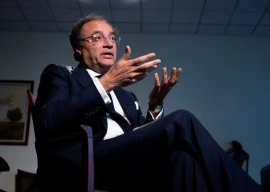
Independence didn’t come cheap, nor did it come easy. The path to 1947 was neither short nor smooth. In fact, the eventual ‘constitutional liberation’ and partition of India took decades of violent and non-violent movements, legal and extra-legal measures, even accessions and assassinations. But it all started with a prude girl, a reputed virgin by the name of Elizabeth.
That’s right. On 31st December of the year 1600, Elizabeth I granted the first Charter to the ‘Governor and Company of Merchants of London trading into the East Indies’ empowering them to ‘lawfully impose... such Pains, Punishments and Penalties...upon and against all Offenders...’ who didn’t let them trade for the Crown. This was arguably the first British ‘law’ geared towards India. By 1683, the Company was empowered to declare war on and to conclude peace with any ruler. Consequently, it was also allowed to raise, arm, train and deploy an army. By 1686 it had its own royal mint. Less than a century after its existence, the Company had become what today’s political scientists would call a major non-state actor, with all the essential and effective powers of a state.
The next century was even more exciting. Now reinvented, the New East India Company spent the 1700s filling the vacuum left by the dead Aurungzeb, finishing off the Dutch and French, fighting legendary battles like Plassey and Buxor, crushing the die-hard Sultans of Mysore, and finally controlling most of India without much resistance. Thus, within two centuries, from Elizabeth’s Charter signing to the death of Tipu Sultan (1799), a mere trading firm had taken over a subcontinent: a vast polity riddled with internal strife, religious tensions and no central authority had capitulated to an organised gang of armed merchants.
History unfolded. The uprising of 1857 came and went. Britain strengthened its role in the affairs of India, developing and raping the country as only a true colonial master can: simultaneously, and with methodical design and discrimination.
But you can’t have too much of a good thing. The same Indians the Britons had cloned after themselves to fight their wars and run their bureaucracies, now wanted in. Thus came the Minto-Morley reforms in 1909, which allowed Indians (a very select few) to vote for Indians (a very privileged few). The beginning of the end for the Raj was nigh.
Not really. It was 1919, and a couple of chaps with the equally complicated names of Montague and Chelmsford decided that Indians (who had fought valiantly for the Empire in the Great War) were finally ready for ‘responsible government’. As our planners happened to be the secretary of state and the viceroy of India, respectively, this was not exactly a pipe dream conceived in a London pub. Thus came the Government of India Act of 1919.
For India, it was a legislative revolution, and these were the main stipulations: Two houses of legislature, ‘semi-direct’ elections, and the power to make all the laws for the entire realm of British India.
Well, except some laws. With some rules. And what were these? Let’s see. Revenue. Religion. Military. And foreign affairs. For these four areas, the newly empowered legislators had to check with a man called the governor-general.
The ‘GG’ was quite the tough guy, at least on paper. He could stop any bill if he felt it affected the ‘safety or tranquility of British India, or any part thereof’. He could issue an ordinance that would essentially become law. He could veto anything the politicos in the legislature came up with. In fact, he could even tell the politicians what to debate about and when to go home. And yes, he could shut it all down by dissolving the legislature.
Sound familiar? It should.
Today, we have a bicameral system which is limited by unwritten ‘no go’ rules, where our politicos are also unable (or unwilling) to debate and legislate reforms for religion, foreign policy, military affairs, even budgets. Four critical categories of policy-making remain off-limits, despite independence!
But who is our governor-general? The Man Who Can Shut It All Down? Three guesses, and here’s a hint. Start by looking for someone with the words ‘governor’ or ‘general’ attached to his name. Let’s start alphabetically...
Published in the Express Tribune, May 20th, 2010.










































1713521455-0/Untitled-design-(9)1713521455-0-270x192.webp)





















COMMENTS (3)
Comments are moderated and generally will be posted if they are on-topic and not abusive.
For more information, please see our Comments FAQ